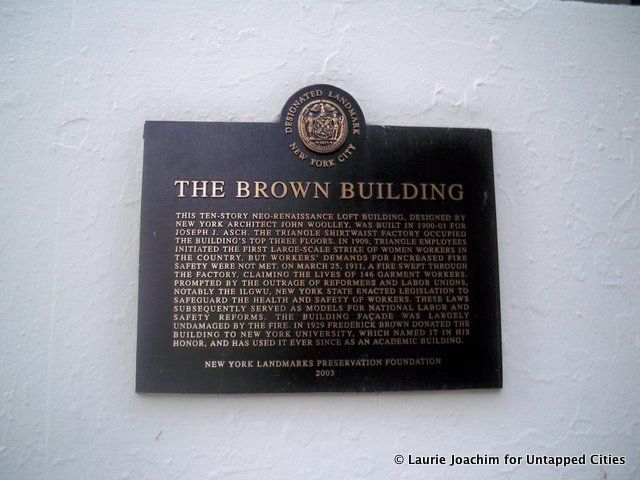Last Chance to Catch NYC's Holiday Notalgia Train
We met the voices of the NYC subway on our nostalgia ride this weekend!


The Today in NYC series often covers obscure corners of New York City political history, but one of the most important and most tragic events in city history took place on March 25, 1911: the Triangle Shirtwaist Fire. On that afternoon, a fire broke out on the top floors of the Triangle Shirtwaist (women’s blouses) factory in the old garment district, killing 146 workers, mostly young women.
When the fire began, workers found themselves trapped by doors that had been locked to prevent them from taking breaks or stealing blouses. The elevator operators valiantly brought down a dozen passengers at a time while the flames roared behind them, but most were left behind. Approximately 40 women plunged to their deaths, some desperately lunging for the fire department ladder, which only went up about six floors. One young couple was seen kissing on the windowsill before taking the plunge together. Trying another tack, three men created a human chain to the next building for women to cross on their backs, but their strength eventually gave out, and all three plummeted to the ground below.

Thousands on the street watched this horrible event unfold. Outrage across the city was palpable, best summarized by Rose Schneiderman a garment worker organizer and suffragette, and later an ACLU co-founder, who spoke at the memorial service a week after the at the (original) Metropolitan Opera House:
“I would be a traitor to those poor burned bodies if I came here to talk good fellowship. Too much blood has been spilled. I know from my experience it is up to the working people to save themselves. The only way they can save themselves is by a strong working-class movement.”
On April 5, 1911, a crowd of over 100,000 marched up Fifth Avenue to pay tribute to the victims, with another 400,000 watching, totaling a tenth of the city’s population. Real action was needed.
Albany, which had earned its reputation for inaction even a century ago, moved with uncharacteristic urgency, with reformers and Tammany Democrats working together. The Commission held dozens of hearings and interviewed hundreds of witnesses across New York State from 1911 to 1915. Their legislative recommendations produced sweeping changes to New York’s workers compensation, worker safety standards, child employment regulations, building codes (requiring sprinkler systems and “panic bars” that one punches to get out certain exits), more than 20 laws in total. Unfortunately, following the impeachment of the reform-minded Governor Sulzer ni 1913, the business community fought back, arguing that these regulations would drive business out of New York.
Reflecting decades later, Frances Perkins thinks that the legislature setting up the commission, rather than the governor was essential to its success:
“Well I thought that was absurd at the time. But I learned by long experience that it is not absurd; it’s the way to do it. This is the way that the legislatures are persuaded to act. All right go ahead,” then it’s their responsibility to do something about it, and the New York State legislature did exactly that.
For all of the positive changes that came from the tragedy, justice was not served to the victims’ families. Company owners Max Blanck and Isaac Harris were acquitted of criminal charges and ended up paying $75 per victim to their families, far less than they received from their insurance policy.

The building itself, located on the corner of Greene Street and Washington Place, is landmarked, and sits in the middle of NYU’s campus. Known as the Brown Building, the top floors now house New York University’s Center for Developmental Genetics.
A number of local nonprofits and advocacy groups named the Remember the Triangle Fire Coalition united before the 200-year anniversary and held events throughout the spring of 2011. At 4:45pm on March 25, 2011, hundreds of bells rang out in churches across the city. The coalition continues to host a variety of events that mark the anniversary of the tragedy each year and have led the effort for the installation of a permanent memorial to the tragedy.
Read more from Today in NYC History on and on janos.nyc
Subscribe to our newsletter